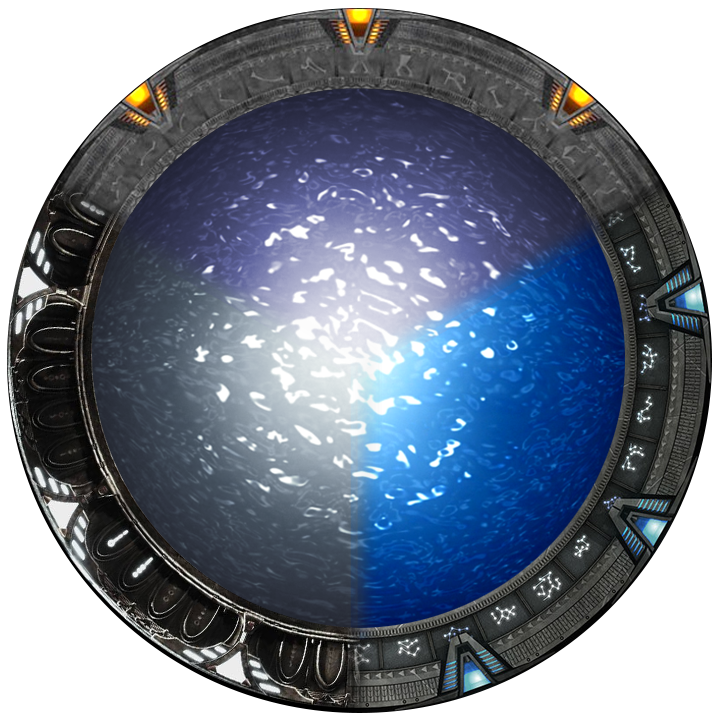Imagine how OP their colour perception would be if they did have that mental processing power
Oh that explains this scene
Horrible news
Ruined my day tbh
This is really cool, but it’s also over a decade old info. I remember growing up in awe of Mantis shrimp and then, as with all wonder, this was removed from my life in adulthood. :)
Thanks I was gonna check
Still one of today’s lucky 10K!
Me too
Some hugely detailed and really certain knowledge from neurology…
I think this speaks to a significant misunderstanding that most people hold of the way vision actually works.
Most people imagine that vision is a relatively simple process by which our eyes detect and transmit to us the nature of the world. Not so.
Eyes are complex and interesting organs in their own right but fundamentally what they do is relatively simple. They are able to detect and report to the brain certain qualities of the light that hits them. Primarily these are: intensity, direction, and proximity to three points on the frequency spectrum (what we perceive as red, green, and blue). But this data alone is not vision. Vision is a conscious experience our brains create by interpreting and processing this data into the visual field before us—basically, a full scale 3D model of the world in front of us, including the blended information on reflection and emission that color entails.
Quite amazing! Most of this takes place in the human brain, and not the eyes. From this perspective, it is not terribly surprising that an organism with more complex eyes but a much simpler brain might have worse vision than we do.
Ha! I read the following Science new article just today about how Purple Only Exists In Our Brains. It’s written for a younger audience (I think), but it lays out how our sight works, and how our brains trick us into seeing purple (a red-blue colour, as opposed to violet).
Poor shrimpos, no purple for them, I bet.
This phrasing always bothers me a little, because, as even the article quotes a scientist saying: “All colors are made up by the brain.”
Purple is special because it triggers from non-continuous wavelengths of light, not because the subjective experience of purple is an invention of the brain. Being ‘invented’ is something common to all colors. Or sounds. Or tastes.
It’s amazing and crazy to think, too, that the “theater” our brains create is an equilibrium point of laziness (to save energy) and usefulness (to help survival). So, surely, there are things we are just unable to see. But also, probably, there are different things that get mapped to the same things in the “theater.” I’m just speculating though but it makes sense.
It’s a good thing we can surpass the limitations of our perception by creating external tools that augment our senses and translate extra-sensory information about the world into something human perceptible. We’ve even gone so far as to send such devices into space.
We don’t really detect direction of light exactly. Instead we detect the location in the eye where the light landed, and have lenses to focus the light onto our retina. That relationship does imply some of the directionality of the light, by ignoring light that goes in certain directions and relating the direction of light that does get detected to the location it ends up.
Yeah I was trying to avoid those details. I think it’s fair to summarize that as a system that detects the direction light is coming from.
By the same logic, we don’t detect light, just the change in shape of certain proteins. The sky isn’t blue, it’s a subset of sunlight. We don’t really touch things, we transmit forces with tiny magnets. Computers don’t really do math, they just arrange states in certain ways.
The world
is beautifulmakes my brain release endorphins
*we detect the direction of light by the location in the eye…ect.
There fixed it for you.
ect.
etc. It stands for the Latin words et cetera.
You haven’t been saying ectcetera have you? Oh no.
Correctors better come correct.
The way mantis shrimp see is nonetheless super cool and interesting. They likely have no conception of 2D color at all, and can only sense the 12 different colors in general. Furthermore, only the midband of their eyes see color, when the eyes are moving and scanning for prey, they don’t see color at all, which probably helps offload mental load for their small brains. Once they do see something, they then stop moving their eyes to determine the color of what they’re looking at.
Also, mantis shrimp have 6 more photoreceptors in addition to the 12 colored ones, to detect polarized light. They likely see them the same way that they see color, so they probably don’t consider them anything different than wavelength which is what we interpret as color.
Ed Yong’s An Immense World has a section on this and I’d highly recommend it. The ways animals sense and perceive the world are often so different for ours and it’s so fascinating.
“Spiders can detect danger coming their way with an early-warning system called eyes.”
Really fantastic book. I did have some notes though. Firstly, if honeybees have such low dpi vision, how can they see each other dance? I assume it’s because they’re experiencing the dance some other way, but how? (Also it’s hella dark in there, isn’t it?)
He says many times that humanity’s umwelt is dominated by sight, but I very much disagree. To lose my hearing or sense of touch would make me feel quite blind, as I use them to perceive things outside my cone of vision constantly. Being in deep water is unnerving for this reason, because I can’t “see” what’s around me, and I have this whole new area below that I can’t hear either. So I have to wonder whether other people feel the way he does or whether my usage is more unique.
He really blew my mind when describing exafference and reafference because these things are reliant on a sense of self in the first place, which means that even the worm in his example must have some form of ego.
You show that you are dominated by sight even as you say you aren’t.
Losing your hearing or touch would remove peripheral senses, yes, and certainly that would be unnerving, but think how much worse it would be to lose sight. Hearing wasn’t even a factor for you beyond your peripheral, because what you can see is so much clearer, so much more comprehensive, than what you can hear, that hearing is negligible where you have sight.
Hearing is a backup sense. Something you lean on when you don’t have sight, but its fidelity is poor enough in people that we rely nearly wholly on sight, when we can.
Losing that cone of vision impacts us far more than our hearing, although of course losing either is massively detrimental.
While sound is not nearly as dominant, it’s absolutely not just a backup sense. It’s the fastest perception we have (the best rhythm game players can play blind but not deaf), it covers all directions, and even in our sleep we still respond to loud sounds.
Sound perception is so fast that it’s often what directs you to look in the right direction, even if what you’re reacting to happened in your field of vision.
Funny enough, even our peripheral vision is faster than our central field of vision, to help us avoid predators coming from behind! Our forward directed vision is for tracking and understanding what’s in front of us, sound and peripheral vision is in large part for environmental awareness. They’re co-dependent!
Humans can even learn echolocation!
I have heard that the incidence of suicide is higher in deaf people then in blind people, which would suggest that, while our senses are sight dominated, losing our hearing has a bigger impact in some way. That said I can’t find a citation for that, so make of it what you will.
This is the best I could find on the specific topic: https://pmc.ncbi.nlm.nih.gov/articles/PMC7888369/
People with visual or hearing sensory impairments had twice the odds of past-year suicidal ideation (OR 2.06; 95% CI 1.17 to 2.73; p<0.001), and over three times the odds of reporting past-year suicide attempt (OR 3.12; 95% CI 1.57 to 6.20; p=0.001) compared with people without these impairments. Similar results were found for hearing and visual impairments separately and co-occurring.
Or maybe the blind people just miss more.
Hearing is a backup sense.
That might vary by person, but for me it’s not. If I had to pick between being able to see and being able to hear, it’d be hearing, hands down. Being able to see is amazing and I’d miss it, but hearing is just a whole other dimension.
Being able to know how someone is feeling, just by hearing their voice. Listening to music and hearing all the shapes, colors, and feelings that come with it. The colors aren’t always ones you can see, like blue or yellow. It’s hard to describe. I’ll close my eyes and just listen at a concert (not the whole time) and same with TV, a lot of times. I usually remember it better that way.
If I have to find something in a backpack, I’ll often do it by feel. I probably look like a raccoon washing its food, but it just works for me. You can tell things apart by feel and sound.
That’s neat.
It makes me wonder if your hearing is better than average or if your eyes are worse, making it not so clear-cut.
Do you need glasses, or have you ever had your hearing tested for whatever reason?
Your description of hearing shapes and colors sounds a lot like someone with synesthesia, a rare condition that’s seems to have no downsides and only benefits.
a rare condition that’s seems to have no downsides and only benefits.
A potential downside is sensory overload.
I don’t have it but one of my kids does. She sees colors with certain numbers and letters. Certainly doesn’t seem to have a downside for her and in my reading I haven’t heard of a sensory overload issue. Is this strictly related to the synesthesia or perhaps synethesia exaggerating an existing autistic or ADHD issue?
how can they see each other dance? I assume it’s because they’re experiencing the dance some other way, but how? (Also it’s hella dark in there, isn’t it?)
By touch. This 50s video shows it well.
Oh, I see. I thought they communicated much more complex information than that, but it’s very practical for simple directions with no further details.
Yup - as far as we know the dance conveys three pieces of info, about a food source:
- direction - by the direction of the waggling
- distance - by the duration of the waggling
- benefit - by how frequently they do it (based on the resources and potential predators)
They also release some pheromones while dancing, but I think that’s just to warn other bees “hey, someone is dancing in the hive”.
For anyone wondering why they would need to see polarized light: I actually looked into this a few months ago!
Other animals that are trying to blend in with the environment often use countershading appear less conspicuous. The problem with this is that this method can’t replicate the polarization of the light behind them, making them stand out if you can see that sort of thing. ((Sunlight in the ocean is always polarized based on the direction of the sun (look up fresnel equations for s and p polarized light))). Even transparent creatures will interrupt the polarization in some way, so this is a very useful skill to have.
More specifically, polarization changes with the angle of reflection of the surface towards the detector / eye / camera, so every bump in the surface gets a color gradient different from the surroundings when seen by a polarization sensitive eye
I… must… be… strong… must… not… do… it… must… resist… the urge…
🎵 But I’m only human 🎶
We got shrimp drama before GTA VI
Shrimp photoreceptor situation is crazy
Makes me feel better about being a human. Our eyes are not deficient. Humans are superior!
Shrimply*
Isn’t it amazing how birds reverse engineered airplanes?
Did a shit job of it too, got the wings all flapping around like a bunch of idiots.
I want to see a bird swing around its break as a propeller.
That’s silly thinking. Everyone knows birds aren’t real, so they’re just late-stage planes created by engineers forced to follow certain constraints.
I know some people who I suspect of having more different kinds of photoreceptors as well…
Reminds me a little of CD digital audio. The original Red Book audio standard hasn’t really been improved upon because it’s uncompressed audio which covers basically all of the range of human hearing within the capabilities of any speaker we could build. It’s uncompressed because in the early 80’s when the tech hit the market, it was completely unfeasible to include the CPU and RAM needed to decompress audio in real time.
Shrimp has more color receptors because he doesn’t have enough neurons to run trichromacy, so he sees in EGA.
Is moral of your story that adults having frequency detection limited to 16khz, with older adults lower, might still be able to detect music well enough?
Oh man.
12 year old me waiting for hours to rip mp3s from cds always wondered about this.
Like why isn’t it already compressed?
The answer is that storage was available but processing wasn’t. Amaze.
Mp3 is already compressed, as is the MP2 CDs use.
If it wasn’t conpressed, you’d be looking at CDs per track, instead of tracks per CD.
What are you on about? CD-DA, aka audio CD, aka red book audio, is uncompressed 16-bit PCM sampled at 44100Hz. It is lossless.
MP3 (MPEG-1/2 Audio Layer III) is a lossy encoding standard commonly used for online audio distribution and steaming. MP2 usually refers to MPEG-1 Audio Layer 2, which was most commonly used in Digital Audio Broadcast.
Neither are used in ‘regular’ CD audio.
I’d like to subscribe to the format facts newsletter. Can you do VHS next?
Shrimp has more color receptors because he doesn’t have enough neurons to run trichromacy, so he sees in EGA.
love this. nice job :)

I remember experiencing the EGA to VGA graphics evolution when I was growing up. I remember thinking the VGA almost seemed too real.
In my mind, this was a game that felt like it was pretend:

But this felt entirely too real:

Have you played The Crimson Diamond? EGA is back, baby!
Green and red do not come back yellow, it makes brown…or is there some other process they’re describing?
There is two types of color blending, tint and light.
Tint is what is usually taught, primaries are red, blue,yellow and we make the rest with them.
With light however, the primaries are Red, Blue and Green. Most image editing software use light blending, so you can zoom on a pixel and use a color picker to get its RGB value. And to make yellow with light blending, you combine red and green
Extra fun fact! Tint primaries are actually Magenta, Yellow, and Cyan.
Red + Blue = Magenta Red + Green = Yellow Green + Blue = Cyan
Magenta + Yellow = Red Magenta + Cyan = Blue Cyan + Yellow = Green
My apologies if I missed the /s but eyesight works in additive colors, not subtractive
How did they test if they could see color? Did they make little shrimp dioramas or something?
They asked them politely
The easiest way is to use the principles of conditioning. Pair a stimulus with a certain color light, then start flashing up different colored lights. If the organism is cued to the stimulus by multiple colors of lights, it means that they can’t really distinguish between them.
That’s how we tested when kids lose the ability to distinguish certain phonemes.
it makes me happy when people understand science.
They give them a miniature color blind print that has those numbers in them that are hidden if you are color blind.



















